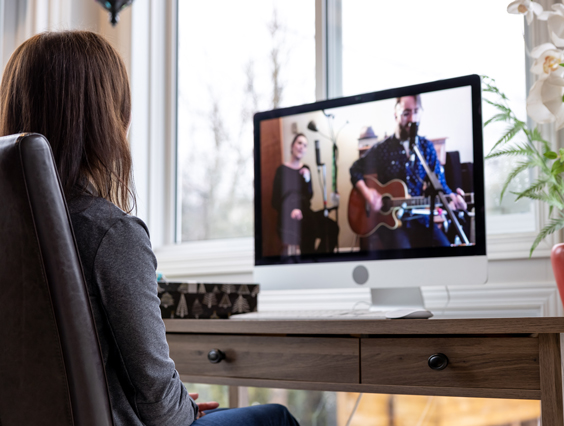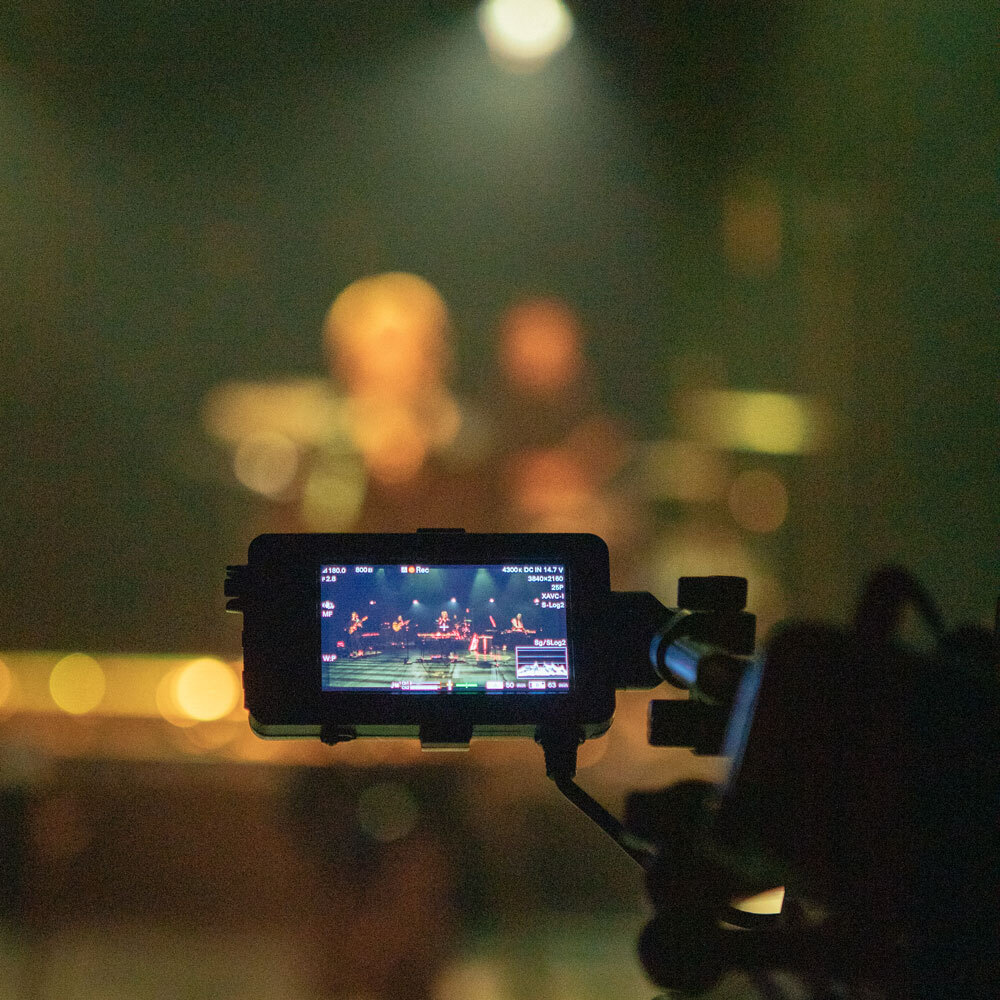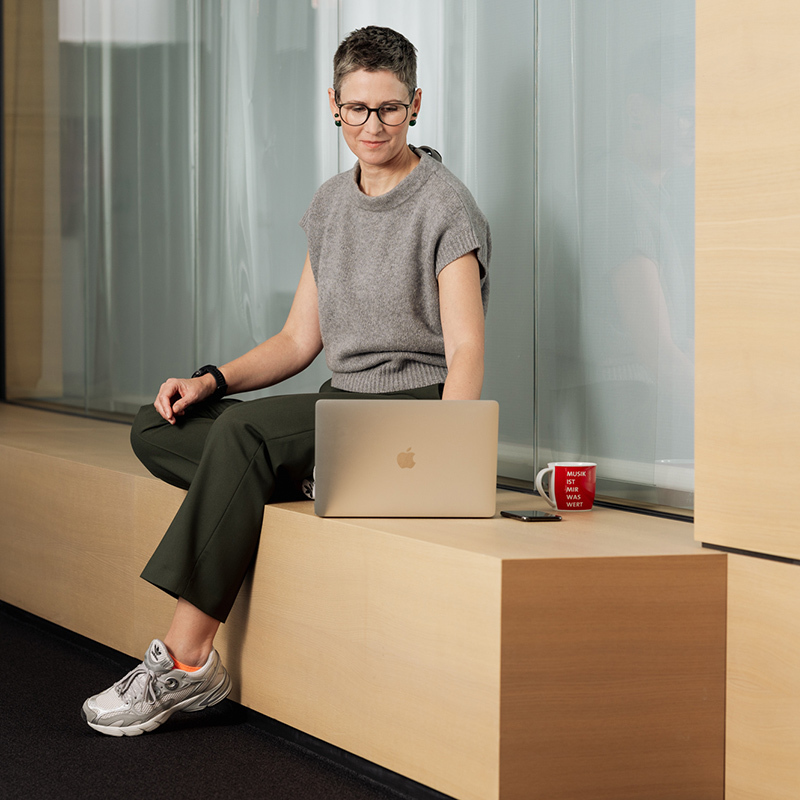
Licence for music in videos
So you want to use music in a video. Or you might have questions on this topic. For example, how much such a licence costs or how you can acquire it. We found out that even experienced video producers do not always have a firm grasp of the topic either. This is why you can find out everything you need to know on this page if you combine music with moving images.
The most important aspect of using music
If you combine music with another medium such as a video, you require the consent of the rightsholders. In most cases, these are the authors who created the work and the music publishers. This is also true in cases if you use the music in an unaltered format in the video. . The reason for this is obvious: Compositions are original, self-contained and protected works which can get a new meaning when used in a video. This meaning or connotation may, however, not be what the creators intended. Take electoral campaigns, for example. It should be clear that a creator of the song may not want to be associated with a political party without having been asked first. This is why the following applies to all moving images formats, whether Hollywood productions, film, series, commercial or videos: You need to ask the rightsholders for their permission first.

Cases where you do not need a licence for the use of music in videos
Works in the public domain
If the composers or lyricists of a work have passed away more than 70 years ago, the work is a so-called public domain work. When it comes to copyright, this type of work does not require a licence. You only get away with not obtaining the rights in cases where you perform the music yourself and record it yourself. If you are using a pre-existing recording, you must obtain the neighbouring rights from artists (see below).
Using music for private videos
If you show your video with music in a private circle only, you do not need to acquire music rights. But do be careful! The definition of private uses in legislation is very narrow. Watching the video with two or three friends at home is allowed. If you show the video at an evening event of your club or association, or put it online, you are infringing copyright.
Ownership of the rights
The following is likely to be rather rare, but for completeness’ sake: If you already hold all the required rights, you do not need to acquire them. This is the case whenever you have composed the music, written the lyrics and recorded the piece yourself, for example. If your music is published, you need to come to an arrangement with your music publisher.
These are the rights you need to acquire if you want to use music in videos
Synchronisation rights / synch rights:
If you acquire the rights from a creator to use their song in a video, you clear the synchronisation rights (as already elaborated earlier). These rights are often referred to as “synch rights” but they always mean the same: the authorisation by and compensation for the rightsholders (composers, lyricists).
Neighbouring rights:
If you use existing recordings for your video, you also need to clear the neighbouring rights (master rights) of the performers and the record producers. It is usually the latter that manages such rights. Find out more on this topic on the page of GVL – Gesellschaft zur Verwertung von Leistungsschutzrechten [society for the management of neighbouring rights].
Mechanical reproduction rights:
Do you want to release and distribute your video on DVDs, Bluray discs, USB sticks or similar media, you need to acquire the mechanical reproduction rights. To do this, you do not need to contact the rightsholders. Instead, simply contact GEMA to get this sorted.
Reproduction rights film video
Performing rights:
If you want to present your video in public or publish it on your website or your intranet, e.g. as an image film, corporate media or further education video, you also have to acquire performing rights additionally. You can also do this directly with GEMA.

Just 3 steps to your music licence
Obtain written authorisation from creators and music publishers
First, you need the consent of the rightsholders in the composition and the lyrics before you can use their musical work in your video. Get this consent by obtaining a written authorisation with legally binding signatures. Once this is done, you have cleared the synchronisation rights. How to contact the rightsholders is explained here under how to find the right contacts.
Get the permission to use the original
You also do need the permission to use the existing recording in its original version. And that from all people who have rights in the original recording. Just get this permission in a written and legally binding format. Contact the record labels to do so.
Obtain the rights for reproduction and publication from GEMA
If you want to publish, stream and multiply your video as an audiovisual medium, you require, as described above, the rights for reproduction and publication. This is a very simple matter because you can contact us directly to do this.
Reproduction rights film video
Tariff for audiovisual productions

Finding the right contacts
In order to complete step 1, i.e. to obtain synchronisation rights, you can contact the music publishers or, in case the music is unpublished, the creators directly. You can, of course, also get in touch with us so that we support you with clearing the synchronisation rights.
This is how it’s done: By using our Repertoire Search, you determine who the rightsholders are. After that, you contact the respective parties and clarify whether and subject to which conditions you may use the musical work.
FAQs – frequently asked questions on licences for music in videos
As a rule, it is the performers themselves who decide how much it costs to use their music in a video. (Only in exceptional cases do they assign the synchronisation rights to GEMA). That is why it is not possible to provide a general answer. Prices mainly depend on the level of fame of the artist and the song, although there are also other factors playing a role here.
Music publishers are usually very happy to submit an indicative quote for licensing music in a video or a film. Provided that the publisher receives a professional inquiry for a price indication; it should contain at least the following information.
Music title:
Of course, you need to indicate the music title that you want to use. Rule of thumb: The more renowned the title and the artists, the higher the price.
Period of use:
Name the period for which you require the licence.
Territory:
Are you showing the video in Germany only? Or in other countries, too?
Music duration:
How long do you intend to use the music in your video?
Type of use:
Please describe for what and how you want to use the music title.
Type of video production:
Submit details on the production and your production budget.
Producer/production company:
Who is producer and contractual partner?
Media to be used:
Which media types and channels do you plan to use for showing your video?
No, there is no music that is not subject to copyright. If someone composes a musical work, the copyright automatically accrues to them. (In such cases, it is not necessary to send GEMA a notification or some such, either.) There are, however, works where the creators have deliberately waived their rights or for which they grant a licence without compensation. If anyone talks about copyright-free music or “licence-free” songs, they usually mean songs and instrumental pieces that are not subject to a licence fee and whose use is permitted upon a one-off payment of a licence fee.
A special case are public domain works whose creators have been dead for at least 70 years; their protection under copyright laws has expired. Regarding copyright, these works are therefore considered rights-free. Please note, however, that any current arrangements of the work may be protected.
YouTube has concluded a licence agreement with us. In it, we granted it exploitation rights. This means that you can upload music that is subject to a GEMA licence on YouTube because YouTube is paying the licence fee for it.
Now on to synchronisation rights: They are only a part of the licence agreement with YouTube, if you are acting for private purposes only, i.e. not for commercial purposes and if you do not generate any significant revenue with your activity. In other words, if your video is not for private purposes, you need to acquire the synchronisation rights with the respective rightsholder/s prior to using music subject to a GEMA licence in a video.
Please also remember that you may have to obtain further rights required, e.g. the neighbouring rights (label) when it comes to the use of original recordings.
No, there isn’t. Despite rumours to the contrary: It is wrong that a musical piece only has to be licensed if it is longer than a given duration. The law merely governs that musical fragments which are combined with other contents are, under very specific conditions, not automatically deleted on UGC platforms such as YouTube until the appeal procedure has been completed. Such very specific conditions include, among others, that their duration must not exceed 15 seconds or that they are marked as approved. For copyright protection and any claims for damages arising from rights infringements, the duration of the music title is, in contrast, irrelevant. The use therefore has to be licensed from the first bar of the song.